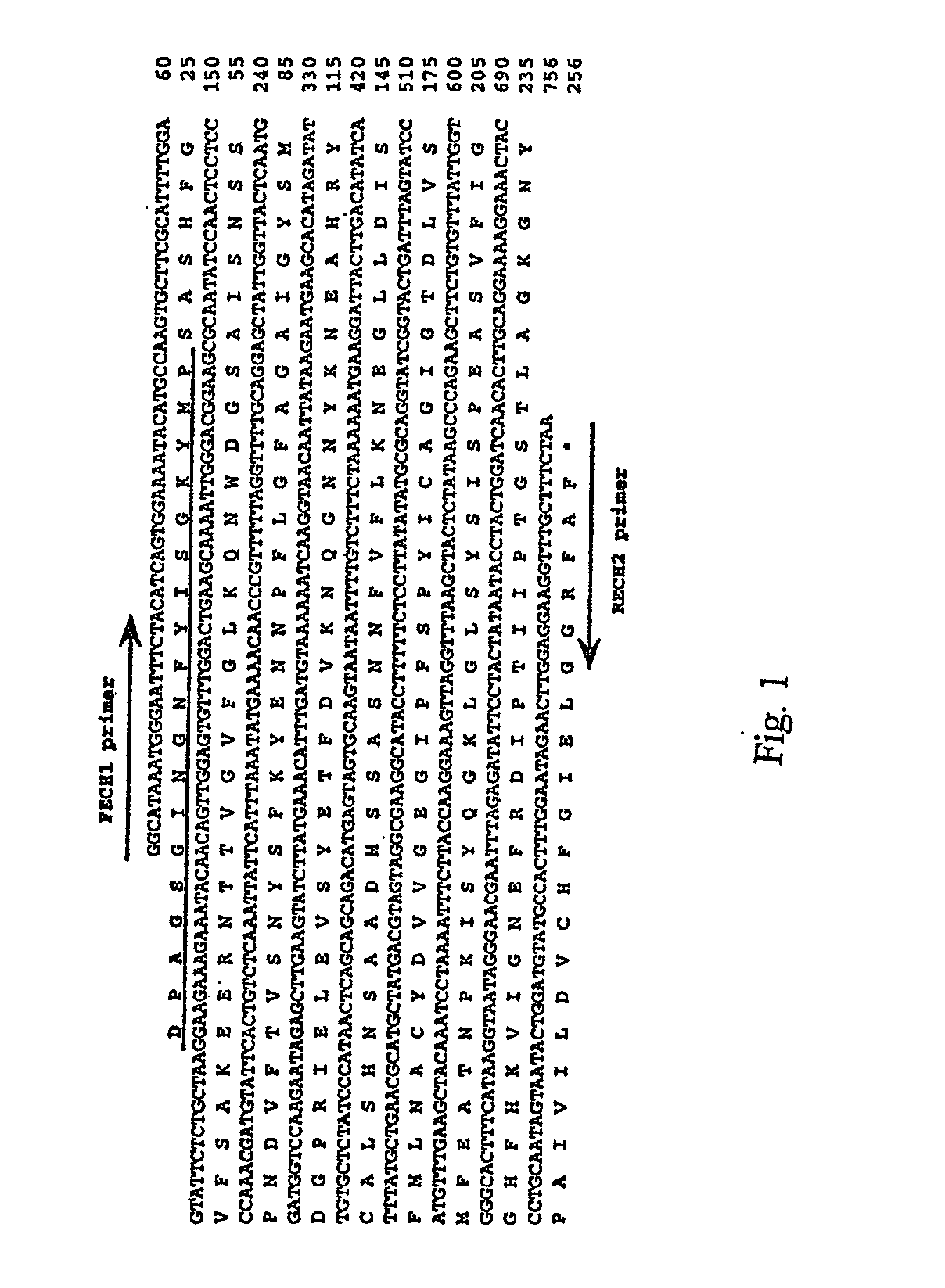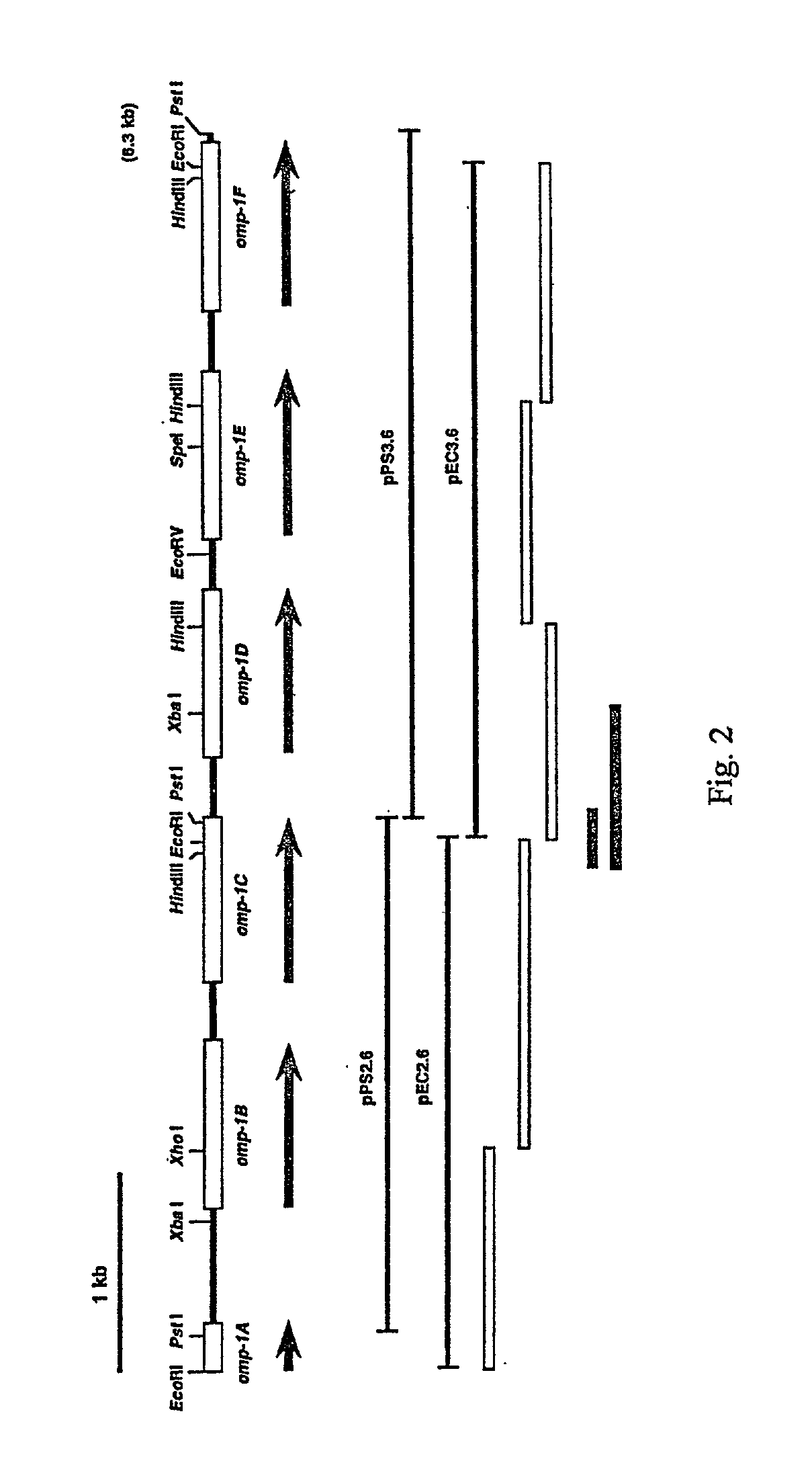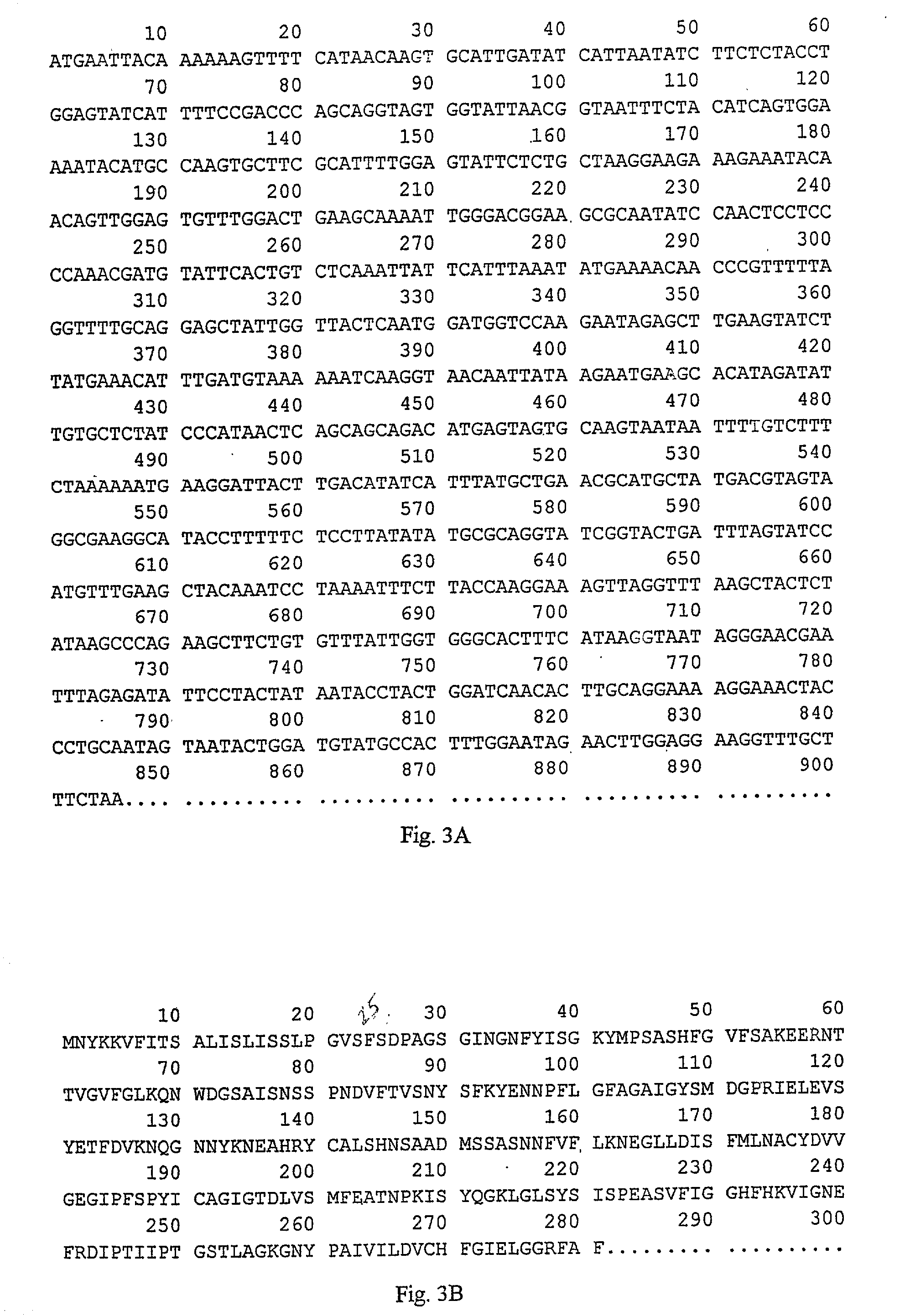Diagnosis of ehrlichia canis and ehrlichia chaffeensis
a technology of ehrlichia chaffeensis and diagnosis, applied in the direction of peptides, surgical instrument details, medical preparations, etc., can solve the problems of false positives of tests, if the test has serious limitations, and the infection of dogs that do not respond well to antibiotics
- Summary
- Abstract
- Description
- Claims
- Application Information
AI Technical Summary
Problems solved by technology
Method used
Image
Examples
example 2
[0123] Assaying for the Presence of Anti-OMP-1 Antibody in a Patient
[0124] Convalescent-phase serum from a patient with clinical signs of human ehrlichiosis was reacted with the rP30 protein of E. canis as described in Example 1. The serum reacted strongly to rP30. These results indicate the rP30 is useful for diagnosing an infection with E. chaffeensis in human patients.
example 3
[0125] Identifying E. Chafeensis-infected Cells using Anti-rOMP-1 Antibody
[0126] E. chaffeensis-infected DH82 cells were sonicated and centrifuged at 400.times.g for 10 min. The supernatant was then centrifuged at 10,000.times.g for 10 min to obtain ehrlichia-enriched pellet. The pellet was resuspended and incubated with rabbit anti-rOMP-1 antibody or normal rabbit serum (1:100 dilution) at 37.degree. C. for 1 h in PBS containing 1% bovine serum albumin (BSA-PBS). After washing, the ehrlichiae was incubated with gold-conjugated protein G (20 nm), Sigma) at 1:30 dilution for 1 h at room temperature in BSA-PBS. After washing again, the specimen was fixed with 1.25% formaldehyde, 2.5% glutaraldehyde, and 0.03% trinitrophenol in 0.1 M cacodylate buffer (pH 7.4) for 24 h and postfixed in 1% osmium-1.5% potassium ferricyanide for 1 h (34). The section was then embedded in PolyBed 812 (Polysciences, Warraington, Pa.). The specimen was ultrathin sectioned at 60 nm, stained with uranyl aceta...
example 4
[0128] Immunization of Mice and E. Chaffeensis Challenge.
[0129] The rOMP-1 band in SDS-PAGE was excised, minced, and mixed with an equal volume of Freund's incomplete or complete adjuvant. Nine BALB / c male mice (6 weeks old) were divided into two groups. Five mice were intraperitoneally immunized a total of four times at 10-day intervals; twice with a mixture of the minced gel with the rOMP-1 (30 to 40 .mu.g of protein per mouse each time) and incomplete adjuvant, and twice with a mixture of the recombinant protein (the same amount as before) and complete adjuvant. Four mice were intraperitoneally injected with a mixture of the minced gel without protein and the respective adjuvants. For ehrlichia-challenge, approximately 1.times.10.sup.7 DH82 cells heavily-infected with E. chaffeensis were disrupted by sonication in serum-free DMEM (GIBCO-BRL) and centrifuged at 200.times.g for 5 min. The supernatant was diluted to a final volume of 5 ml, and 0.3 ml was inoculated intraperitoneally...
PUM
| Property | Measurement | Unit |
|---|---|---|
| molecular weight | aaaaa | aaaaa |
| Tm | aaaaa | aaaaa |
| Tm | aaaaa | aaaaa |
Abstract
Description
Claims
Application Information
 Login to View More
Login to View More - R&D
- Intellectual Property
- Life Sciences
- Materials
- Tech Scout
- Unparalleled Data Quality
- Higher Quality Content
- 60% Fewer Hallucinations
Browse by: Latest US Patents, China's latest patents, Technical Efficacy Thesaurus, Application Domain, Technology Topic, Popular Technical Reports.
© 2025 PatSnap. All rights reserved.Legal|Privacy policy|Modern Slavery Act Transparency Statement|Sitemap|About US| Contact US: help@patsnap.com



